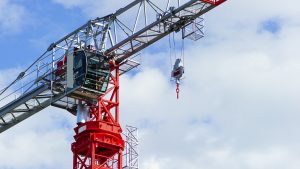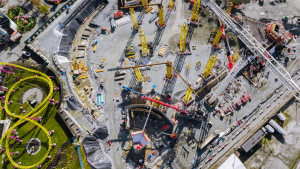Isn’t it ironic? The construction labour shortage in Alberta has reached the point where it is threatening to torpedo one solution to the problem.
CALGARY
Isn’t it ironic? The construction labour shortage in Alberta has reached the point where it is threatening to torpedo one solution to the problem.
The cost of SAIT’s Polytechnic Trades and Technology Complex, which will double the number of its apprenticeship seats, has risen to $353 million from $298 million a year ago when the project was announced.
The jump in price for the one million square foot facility is being blamed on rising construction costs, including the shortage of labour.
The soaring cost of construction came up as SAIT announced it has selected internationally acclaimed Vancouver architect Bing Thom to design the facility.
Thom and his team have started drafting floor plans, but SAIT officials warn construction could be delayed if government funding comes up short.
SAIT officials are calling the facility “the most significant piece of construction in the history of SAIT since the construction of Heritage Hall” many years ago and are therefore hoping the Alberta government will ante up the extra money.
“We’re expecting the Alberta government to fund 81 per cent of the project,” says Bing Runquist, facilities management director.
“If the government is serious about addressing its labour shortage problem, it should support the project.”
SAIT has applied to Advanced Education and Alberta Infrastructure for funding, but a spokesperson for those departments will say only that the government is considering adding the SAIT project to its 2007-08 budget.
“I have run out of adjectives to describe this situation.”
Guy Mallabone, SAIT
Whether it makes the cut, “will depend on available funds”.
SAIT has so far raised $16 million for the project, including a $10 million gift from alumnus Keith MacPhail.
The trades and technology complex will replace the Thomas Riley building on the northwest quadrant of the campus.
The new facility will house programs in construction, manufacturing, energy and automation with construction being the major occupant.
Architectural technology, home renovation, concrete, civil engineering, framing, cribbing, electricity and mechanical trades such as plumbing and refrigeration are among the sectors to be housed in the new facility.
Facilities for the various construction sectors are currently scattered across SAIT’s main campus on 16th Avenue N.W. and its satellite campus in northeast Calgary.
The new building will bring everything under one roof which will be designed as “a living lab and not just another trade school”, one official says.
Another trade school is certainly needed.
“I have run out of adjectives to describe this situation,” says Guy Mallabone, vice president of external relations at SAIT.
The college has had to turn away 5,337 qualified applicants this year for lack of space. The new facility will add 2,735 seats, doubling SAIT’s apprenticeship capacity.
SAIT has about 7,000 trades-related graduates every year, 70 per cent from the construction sector.
SAIT has partnered with several organizations, from the Calgary Board of Education to the Alberta New Home Warranty Program, to raise the profile of the building industry.
It operates pre-apprenticeship programs for several residential construction trades including framing, concrete and finishing carpentry that involve theory, safety and hand tool skills.
“We have a waiting list of people willing to pay as much as $5,000 to get into these pre-apprenticeship programs to get a grounding in a particular trade and begin a construction career,” says Larry Rosia, dean of SAIT’s construction department.
The Canada West Foundation recently released a report that said demand at technical and trade institutes is set to outpace universities and colleges in the coming decades.
“We are going to be turning a tide — I think we’re in the middle of turning it right now — where the trade schools will not be looked down on as perhaps an inferior type of post secondary education option,” said Todd Hirsch in the report Coming Up Next: The Transformation of Western Canada’s Economy.
He predicts improving access to post secondary education will surpass health care as the dominant public concern in coming years.
The Trades and Technology Complex is one of five major building projects planned for the campus.










Recent Comments
comments for this post are closed